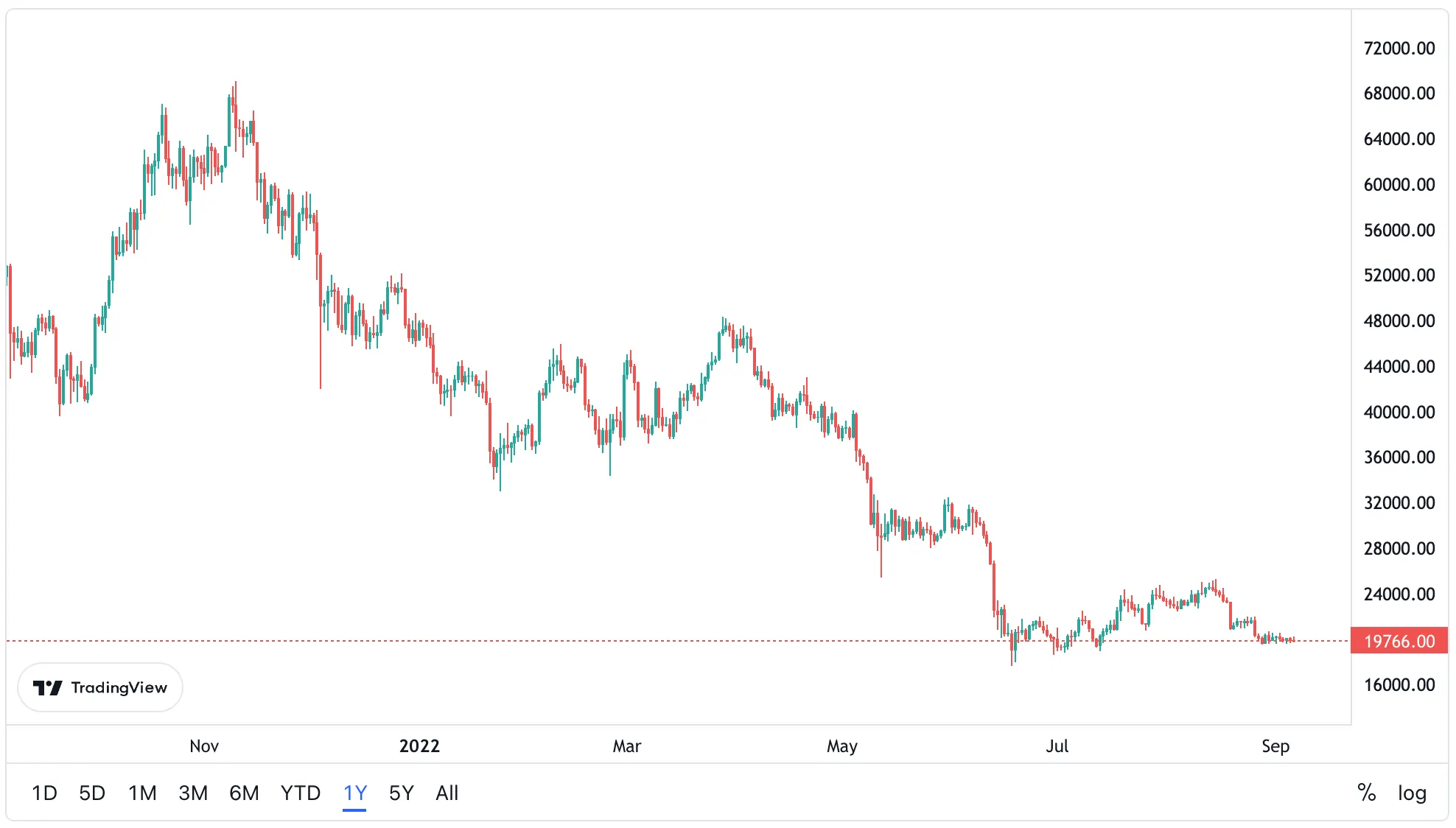We do the research, you get the alpha!
Ethereum founder Vitalik Buterin said on Tuesday that the Ethereum merge is on target to happen "around" September 13 to September 15. That's when the world’s second largest cryptocurrency will jettison its energy-intensive proof-of-work consensus mechanism.
How will that shift affect Bitcoin, which still stands alone atop the crypto market and still uses proof of work?
Shifting sands
The merge is only the latest Ethereum blockchain upgrade aimed at creating a reliable decentralized ecosystem for the future of finance. In addition to alleviating energy concerns, the shift to proof of stake brings additional benefits.
In proof of stake, block transactions are verified by validators that have staked a number of their tokens. The more tokens an individual has associated with the blockchain, the higher probability they have of being randomly chosen as a network validator.
This differs from proof of work, which is an energy-intensive process that relies on computers to solve mathematical algorithms to mine tokens. This rate of energy consumption is a major criticism of proof of work, which will remain the basis of Bitcoin mining after Ethereum ditches the process.
Beyond the energy issue, and in addition to the recent meltdowns of crypto lenders, the crypto industry writ large is facing myriad macroeconomic concerns ranging from political tensions to high inflation rates to hawkish national monetary policies. These macro factors are credited with igniting the recent bear market.
Price pressures
Bitcoin reached its all-time high value of $69,000 in November of 2021. Since then, rough economic conditions have soured Bitcoin’s price along with the rest of the market. As Bitcoin’s price continues to waver, facing some resistance at $20,000, the short-term price outlook for the leading cryptocurrency remains cloudy. It's unclear what kind of event or change would help Bitcoin rebound; FTX CEO Sam Bankman-Fried said on a recent episode of Decrypt's gm podcast it would take an "overall economic recovery" or "people getting to a place where they're using crypto for everyday purposes."

As the volatility of leading cryptocurrencies continues to worry mainstream investors, they could become more critical of the fundamentals of Bitcoin—and Ethereum’s network upgrades, intended to position its ecosystem as the currency of the future, could place even more pressure on Bitcoin's usability.
In an interview with the journalist Noah Smith last week on security, governance, and consensus mechanism models, Vitalik Buterin expressed his concerns over Bitcoin’s proof-of-work issuance model. “A consensus system that needlessly costs huge amounts of electricity is not just bad for the environment, it also requires issuing hundreds of thousands of BTC or ETH every year," he said.
Buterin’s concerns not only lie in the energy consumption of the present but how the constant issuance of a proof-of-work token will affect future validation.
Bitcoin's “issuance will decrease to near-zero, at which point that will stop being an issue," he said. "But then Bitcoin will start to deal with another issue: how to make sure that it [the blockchain] stays secure.”
Kyle McDonald, an "artist who works with code" who has made waves recently with provocative declarations of Bitcoin's coming demise, tells Decrypt that Ethereum will slowly win the reliability debate among investors and will benefit with more long-term adaptation.
“After the merge, only 23% of all volume will be proof of work, mostly as Bitcoin,” he said. “As regulators look for ways to control crypto, targeting proof of work will be the obvious first move."
Indeed, Bitcoin’s reputation as an energy guzzler remains its Achilles heel.
Digiconomist, a science and technology publication that tracks Bitcoin energy consumption, regularly applies economic models involving network hashrate, mining revenue, and annualized energy consumption. Its conclusion? “Bitcoin isn’t likely to become more sustainable any time soon.”
The analysis was bolstered after China cracked down on crypto mining, which significantly decreased the share of renewables that power the network. Researcher and crypto critic Alex de Vries noted that “Bitcoin got dirtier after the Chinese mining crackdown in 2021.”
Over-hyped event?
But not everyone is convinced that Ethereum will reign supreme as a result.
Analysts like eToro’s Glen Goodman have highlighted how Ethereum's price has out-performed Bitcoin in recent weeks, which has driven much of the recent narrative. “The latest thing has been, ‘Ethereum is much better than Bitcoin, because the merge is coming up, and the merge will make everything wonderful in the world of crypto and is much more environmentally friendly,’” Goodman said on eToro’s “Crypto This Week” webinar.

But looking at the performance of Bitcoin and Ethereum together, he said, “really shows you in stark relief how misguided the merge narrative has been. I would argue… it was just a catch up game, that was the probably the main factor. Ethereum had fallen so much harder than Bitcoin had since the end of last year, and then after playing catch up, is now trading more or less exactly where Bitcoin is.”
Goodman concluded that the narrative around the merge "has helped Ethereum recover, but nowhere near as much as the boosters would like to claim.”
Dan Held, an influential Bitcoiner who now eschews the "maximalist" label in favor of "mostamalist," told Decrypt's gm podcast he's watching the merge closely and that, "I do think it will add pressure to Bitcoin's energy consumption" even though he views proof of stake as not worth the network security sacrifices.
And still other critics like Dennis Porter, founder of the nonprofit Satoshi Action Fund, say the merge will actually make Ethereum irrelevant. "Ethereum is obsoleting itself by removing Proof-of-Work," Ported declared on Twitter. "ETH will flippen itself out of the global energy markets."
Ultimately, the future of Bitcoin after the merge is uncertain. Regulation, energy concerns, and competition are just some of the factors at play. At a time when its largest competitor is about to claim a significant technical edge, inventors are wary of the potential economic risks.
Editor's note: A previous version of this article incorrectly defined mining difficulty and how it adjusts. We regret the error.





